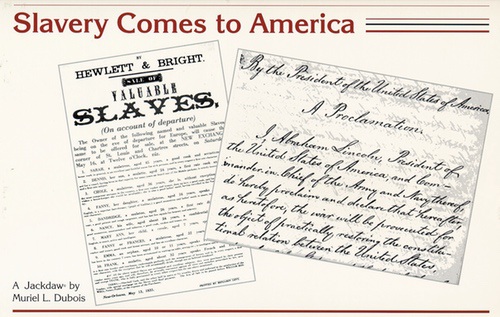
Slavery Comes to America
By the 1700s, slave labor was firmly established in the American colonies. While most people think of the large southern plantations when slavery is mentioned, northern colonists also kept slaves. This primary source portfolio details the rise and fall of slavery in the United States. Students will see the new world's promise in proper light; that it involved slavery and a loss of freedom for many people. The primary source documents illustrate the stark changes in public opinion, from desensitized language on how slaves were commodities to the assertion and eventual winning willfulness that all men were created equal and free. A detailed timeline broadly displays the story of slavery, from prehistory to 1865. Also included are reproducible student activities with a response key, and a recommended reading list for further exploration. 4 Illustrated Broadsheet Essays: * Slavery Comes to the New World Colonies * Slavery in the 1800s: the South * Slavery in the 1800s: the North * The End of Slavery 10 Primary Source Documents: * Newspapers and slavery: Page 3 of the South Carolina Gazette, October 30, 1736 * Newspapers and slavery: Page 1 of The Camden Journal (South Carolina), January 1, 1831 * Slave sale poster, 1835 * Bill of sale for a slave, 1838 * Ordinance to prohibit Slaves from carrying on any mechanic or handicraft trade, 1796 * Portion of the Georgia Slave Code, 1848 * Petition for payment for execution of slave by burning, 1802, and transcript * Petition to free a slave, 1820, and transcript * Letter from a slave, 1838, and transcript * The Emancipation Proclamation, 1863, and transcript








